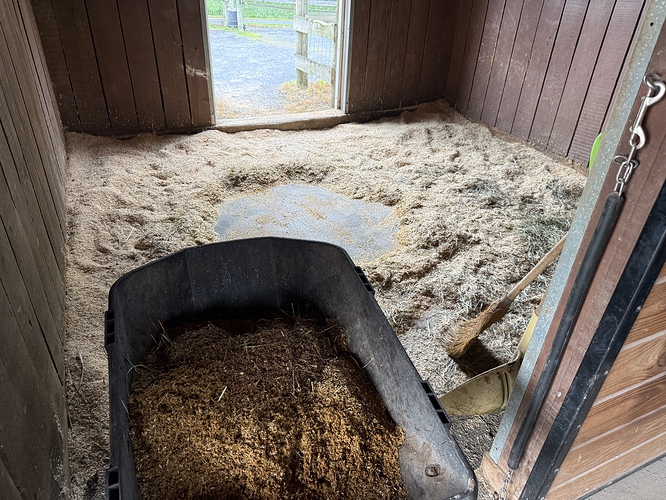I had a longer response written, but it kept giving me a 403 error, so there was something in my text that the server doesn’t like.
Lots of articles mention the amonia fumes, but I have not had a problem with that, as long as I am generous in adding fresh bedding. The stable we had in the '60s, where we used “deep litter” with peat moss, didn’t have great ventilation, but even there we didn’t have an amonia smell.
The other barns since then have had great ventilaition, with half doors open at the top. Most of the time the horses have free access in and out, but even when one was on extended stall rest, amonia wasn’t a problem.
In the winter, the “composting” layer on the bottom releases some heat, which is a good thing.
BUT, I have had one negative consequence you should be aware of. The normal procedure is to strip the whole stll in the spring. That IS a big job.
One spring, I kept procrastinating, and didn’t get a-round-to-it.
It is relevant to mention that most of my horses are and were mares, who tend to pee arond the edges of the stall, not in the middle. You can probably guess what is coming…
When I finally got around to stripping the stall, I found that the wet shavings along the wall in the mares’ stalls (NOT the gelding’s stall) were starting to rot the wood of the stall walls.
Of course, this was right after the COVID pandemic, when lumber prices were soaring, so I didn’t actually get the wood replaced for another year or so.
I still use deep litter bedding, but there are a few take aways.
- Make sure the bottom foot or so of your stall wall is treated lumber
- DO strip the stall at least once a year
- (Especially if you have mares) Every week or so turn over the bedding from the edge of the stall, to make sure it is not building up a wet mass against the wall.




 ).
).